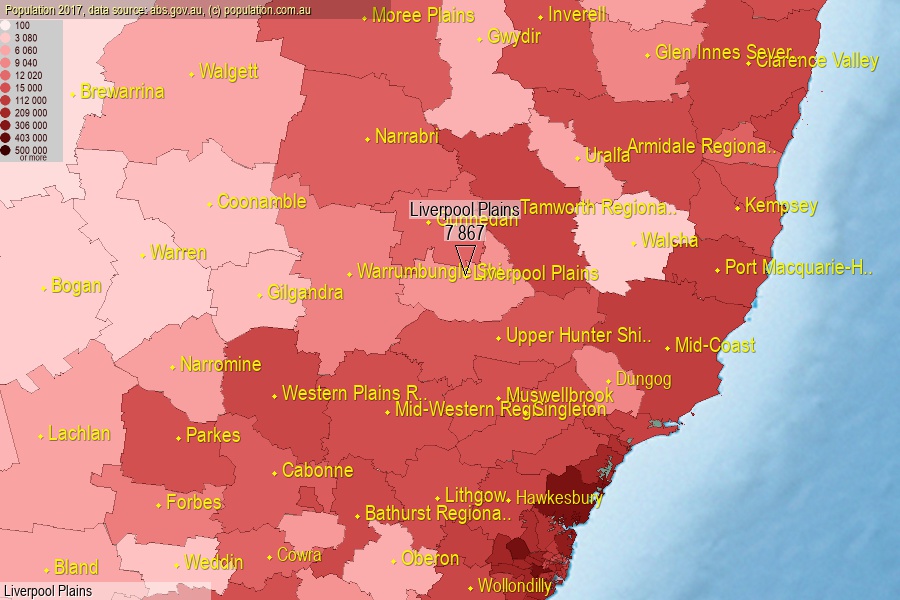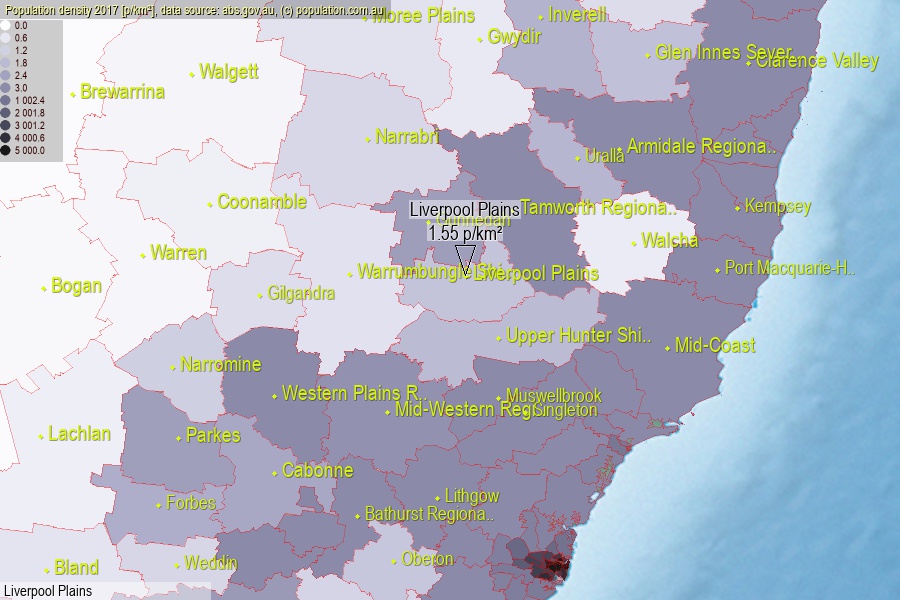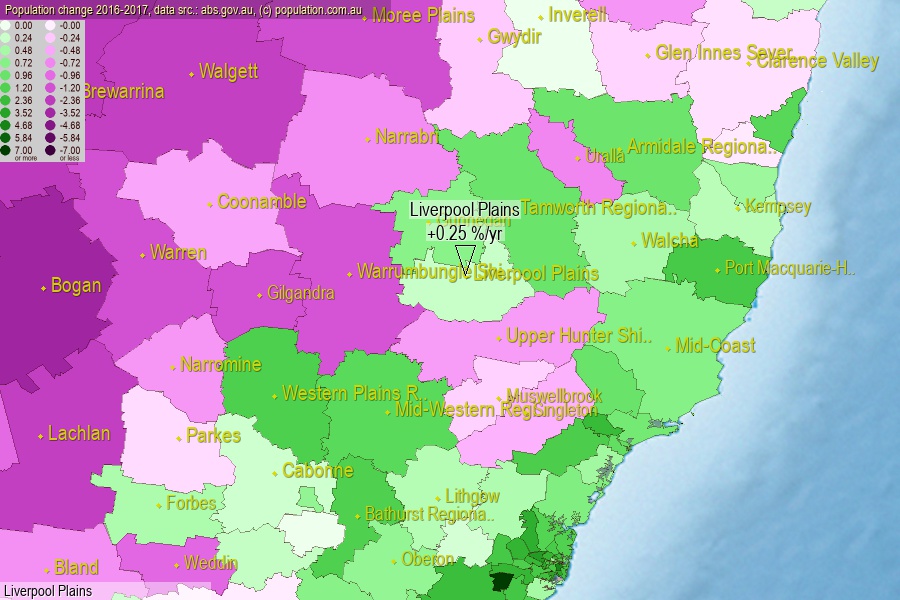 population.com.au
population.com.auLast official estimated population of Liverpool Plains Area (as Local Government Area) was 7 867 people (on 2017-06-30)[2]. This was 0.03% of total Australian population and 0.099% of NSW population. Area of Liverpool Plains is 5 082.20 km², in this year population density was 1.55 p/km² . If population growth rate would be same as in period 2016-2017 (+0.25%/yr), Liverpool Plains population in 2025 would be 8 029. [0]



Click to enlarge. Liverpool Plains is located in the center of the images.
Population [people], population density [p./km²] and population change [%/year] [2]
[1996-2001] -0.15 %/Y
[2001-2002] -0.46 %/Y
[2002-2003] -1.02 %/Y
[2003-2004] -0.79 %/Y
[2004-2005] -0.78 %/Y
[2005-2006] -0.25 %/Y
[2006-2007] +0.04 %/Y
[2007-2008] -0.04 %/Y
[2008-2009] +0.01 %/Y
[2009-2010] +0.26 %/Y
[2010-2011] +0.30 %/Y
[2011-2012] +0.32 %/Y
[2012-2013] +0.33 %/Y
[2013-2014] +0.24 %/Y
[2014-2015] +0.08 %/Y
[2015-2016] +0.13 %/Y
[2016-2017] +0.25 %/Y
[0] Calculated with linear interpolation from officially estimated population
[1] Read more about LGA and Australian Statistical Geography Standard (ASGS) on abs.gov.au
[2] Population data from Australian Bureau of Statistics (Population and density: 2017; change: 2016-2017)
[3] Digital Boundaries: Australian Statistical Geography Standard (ASGS) 2016.